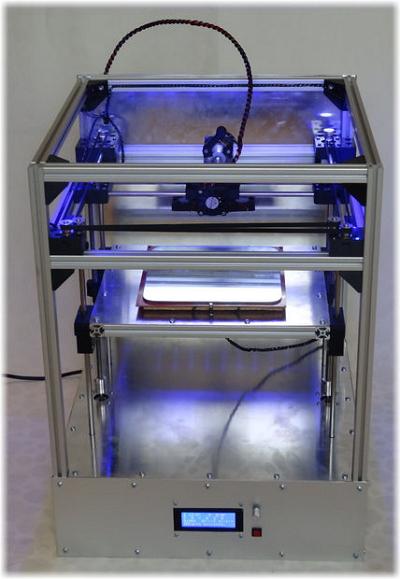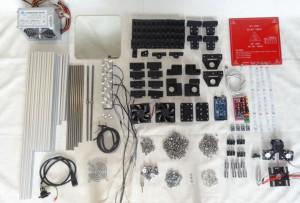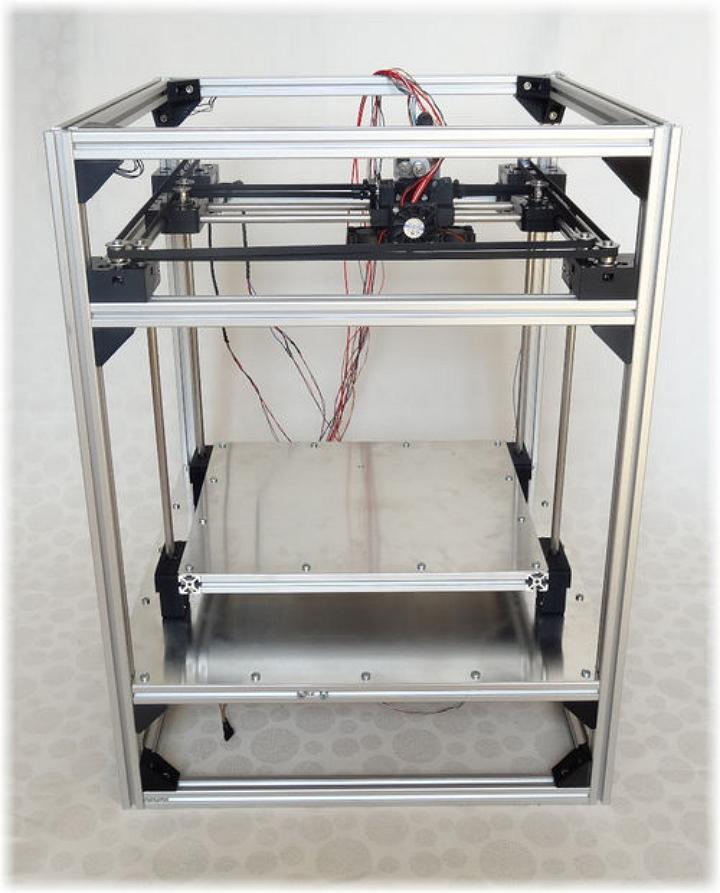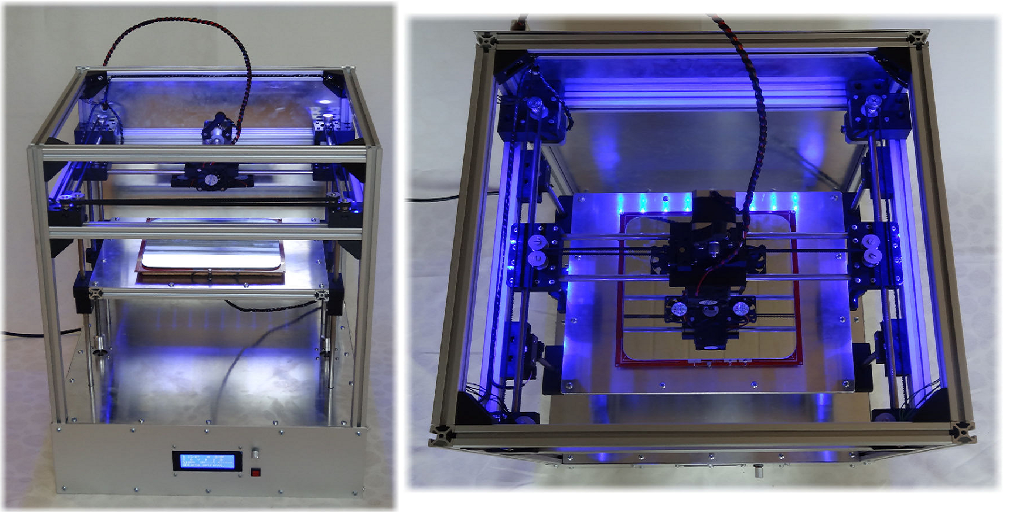 Johannes Rostek is a sixteen-year-old high school student in Germany who plans to continue his education and study electronics or technology, and he’s also a budding 3D printer design engineer.
Johannes Rostek is a sixteen-year-old high school student in Germany who plans to continue his education and study electronics or technology, and he’s also a budding 3D printer design engineer.
 During March of this year, Rostek decided he wanted to build a RepRap 3D printer – but it had to look professionally built, and it also had to be inexpensive. So over the Easter holiday period, he worked every day starting first thing in the morning and continuing on into the afternoon. Once the holidays were over, he’d managed to complete the mechanical elements of what he calls the “Vulcanus V1.”
During March of this year, Rostek decided he wanted to build a RepRap 3D printer – but it had to look professionally built, and it also had to be inexpensive. So over the Easter holiday period, he worked every day starting first thing in the morning and continuing on into the afternoon. Once the holidays were over, he’d managed to complete the mechanical elements of what he calls the “Vulcanus V1.”
“At first I made a rough plan on how to build it,” Rostek says. “After that, I designed it on the computer with Sketch-up and made the BOM and bought the needed things like electronics and mechanics on the Internet. I went to the scrapyard to get some aluminum plates. Then I drilled and cut the aluminum plates by hand because I had no CNC mill, so it took a lot of time.”
He says he’s surprised at how well his design works, and he cites his experience building a RepStrap printer last year as critical to his final outcome with the Vulcanus.
“It helped me to solve problems like warping, layer shifts in the print…. all the RepRap problems,” Rostek says. “Overall I can say that it works really good.”
Based on the CORE-XY mechanical design, Rostek says the Vulcanus allows him to print with high acceleration, high speed, and good resolution, and he adds that, because the design uses 1/256 micro-stepping motor drivers, it’s quiet and “the bearings are the loudest things on the printer.”
He also designed the Vulcanus to be very compact for use on the desktop, and he adds that it’s open source to allow others to build their own versions.
All it all, Rostek says the Vulcanus cost less than €300 to build, but he has no plans to sell them himself.
“It’s very hard to build this printer when you have no CNC mill and you have to drill and cut the aluminum plates by hand. It takes a lot of time to build the printer up, and at the moment, I haven’t got so much time because [I] have to go to school,” Rostek says. “It would be more possible to sell the printed parts, because it’s easier to make them and doesn’t take so much time.”
 But as for selling them at €300? Rostek says that’s not very likely and would only be possible if all the parts were purchased from Chinese suppliers and you built the printer by yourself.
But as for selling them at €300? Rostek says that’s not very likely and would only be possible if all the parts were purchased from Chinese suppliers and you built the printer by yourself.
According to Rostek, the Vulcanus V1 features a print speed of a tested 300mm per second, but he believes that could be upped with some tweaking and more testing. It prints at a resolution of .05mm or greater, has a build volume of 20 x 20 x 26 cm, and takes up just 44 x 44 x 60 cm of desktop space. The printer also includes a heated build platform for using materials like ABS and nylon.
If you’d like to see some step-by-step instructions on how Rostek built his Vulcanus V1, you can check out his very thorough Instructable on the project.
What do you think of high school student Johannes Rostek’s Vulcan V1 printer design? Do you think you could build one yourself? Let us know in the Vulcanus V1 forum thread on 3DPB.com.
Subscribe to Our Email Newsletter
Stay up-to-date on all the latest news from the 3D printing industry and receive information and offers from third party vendors.
You May Also Like
Printing Money Episode 18: The DC Fly-In with Mark Burnham, AddMfgCoalition
It’s only been a week since the previous show, but Printing Money is back already with Episode 18. Certain events call for Printing Money’s coverage, and the recent 2nd Annual...
Aerospace OEM Invests $9.1M in Michigan for Metal 3D Printing and More
Barron Industries, a foundry based in Michigan specializing in serving the aerospace and defense sectors, has made a $9.1 million capital investment to expand its operations in Oxford, Michigan. The...
Can Higher Power Density Engines Lead to Broader 3D Printing Use?
Traditionally, when it comes to sports cars, interest has centered around metrics such as horsepower per cubic inch and power-to-weight ratios. These metrics are calculated and interpreted differently by various...
Wisconsin’s Evology Adds Digital Sheet Forming to Service Roster
Evology, a service bureau based in Wisconsin and specializing in serving strategic sectors like aerospace and defense, has added digital sheet forming (DSF) to its repertoire of manufacturing capabilities. Evology...


































